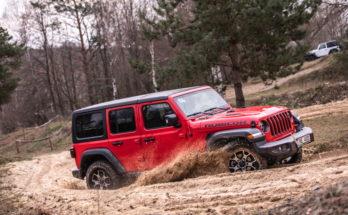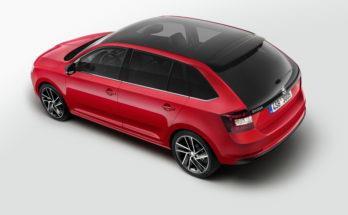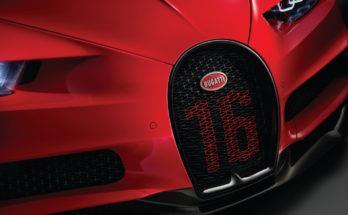The history of lower middle-class Opels began as early as 1936, when the first generation of the Kadett entered the market. Without a doubt, the legendary name appeared successfully even after the war and was replaced by Astra only in 1991. It continues the tradition to this day, while the eleventh generation of the compact model with lightning in the emblem will arrive at the autumn Frankfurt Motor Show!
Although it may not look like that at first glance, the new Astra is literally revolutionary in many ways. For example, it is the first to bring front full-LED matrix lights , referred to as IntelliLux LED in Opel language, to the lower middle class. Each reflector consists of 8 LED segments and their operation is linked to the Opel Eye camera system. Thanks to it, the light beam, or rather its length and intensity, is constantly adjusted according to the current situation on the road. After leaving the urban area, the camera system automatically activates the high beams and switches them off only when entering the next village. In addition to the fact that the driver leaves the control of the headlights practically entirely to the electronics , the system also takes care of his safety. At a speed of 80 km/h, for example, it can illuminate the edge of the road 30-40 meters earlier than a classic halogen or xenon headlight, giving the driver up to 1.5 seconds to make an evasive maneuver. I probably don't need to talk about the fact that the beam does not dazzle oncoming cars.
The appearance of the headlights themselves is excellent, their internal structure and darkened background contribute to a more dynamic "view" of the new Astra. The radiator grille with a more pronounced chrome strip and the group lights with a characteristic cut underwent a transformation in the style of the smaller Corsa. However, the most visually interesting element is the C-pillar, thanks to which the Astra has the effect of a floating roof. Given the shortening of almost 5 centimeters (total 4.37 m) and the reduction of another 2.6 centimeters (total 1.46 m), the improved aerodynamics with a drag coefficient cx at the level of 0.285 are probably not surprising.
Information about shortening the wheelbase by a good 2 centimeters is a bit unusual for new cars, despite this, Opel promises 35 mm more legroom for rear passengers. Anyone who has ever driven in the current model will certainly recognize that it deserves it. Also gone is the era of literally a million buttons on the center console. The new one is dominated by the eight-inch display of the IntelliLink multimedia system with Apple CarPlay and Android Auto compatibility. In addition to touch, infotainment can also be controlled using buttons on the steering wheel or via voice. The OnStar interface with an automatic call for help in the event of an accident or Wi-Fi and 4G LTE internet connection celebrates its premiere in Opel cars. The instrument panel looks neat with white-illuminated alarm clocks in separate tubes, the overall first impression is perhaps only spoiled by the rather massive steering wheel with a thick rim and many buttons.
Compared to its predecessor, the newcomer is 120-200 kilos lighter , the lion's share of which is due to the detailed inspection (and lightening) of every part used. For example, the body alone now weighs 280 kg (previously 357 kg) and the chassis made of high-strength and ultra-high-strength steel is 50 kilograms lighter than before. The D2 platform is also new. Under the hood, there will be a completely changed range of units with reduced consumption and quieter performance, covering the spectrum from 95 to 150 hp . The cornerstone will be a 16-cylinder CDTI diesel engine with a six-speed manual transmission with an output of just 95 horsepower. Above it will stand, in the diesel hierarchy, the same engine with a power of 110 or 136 hp with a standard manual six-stroke and, in the case of the most powerful version, also an automatic six-stroke. The gasoline base will be a naturally aspirated 100-horsepower 14-cylinder engine with a manual five-speed gearbox, above it is a turbocharged three-cylinder Ecotec with 105 horsepower, or a turbocharged four-cylinder Ecotec 14-cylinder engine with 125 or 150 horsepower. The liter is mated to a manual five-speed gearbox or an automatic five-speed Easytronic transmission, the fourteen-litre always has a six-speed manual.
Finally, it is worth mentioning the really wide range of assistance systems . For all of them, let's name traffic sign recognition , lane keeping assistant with warning when leaving it, distance control from the vehicle in front, automatic braking, cruise control with speed limiter, blind spot monitoring or advanced parking assistant. However, the extra orthopedic front seats with a massage machine, ventilation and 18-way electric adjustment for the driver will probably contribute the most to safety.
Source: Opel



